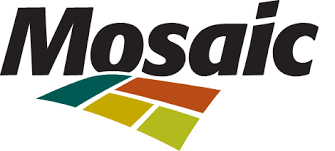
Discover how Johnson & Johnson's latest drug approvals and market strategies are boosting its leadership in healthcare and driving future growth.
Johnson & Johnson's Market Growth and New Developments
Johnson & Johnson (NYSE: JNJ) is a global leader in healthcare, known for its wide-ranging operations in pharmaceuticals, medical devices, and consumer health products. The company has made significant progress in both the pharmaceutical and medical device sectors. Recent successes in clinical trials and new drug approvals have helped strengthen its market position, drawing attention from investors. Some of the most notable developments include key regulatory approvals and advancements in treating complex diseases like cancer and autoimmune disorders.
Major New Developments
1. FDA Approval for TREMFYA® in Treating Ulcerative Colitis
One of Johnson & Johnson's key developments is the approval of TREMFYA® (guselkumab) by the U.S. Food and Drug Administration (FDA) for treating ulcerative colitis. This disease is a long-term inflammation of the digestive tract, and the approval marks an important expansion of TREMFYA®, which was previously used for treating plaque psoriasis and psoriatic arthritis. Ulcerative colitis is part of the broader category of inflammatory bowel diseases (IBD), which affects a significant number of people.
The drug works by targeting IL-23, a protein that plays a role in causing inflammation. With its unique way of managing inflammation, TREMFYA® positions itself as a strong competitor in the treatment of IBD, which is a growing market due to increasing cases of autoimmune diseases. Johnson & Johnson’s continued success in this area demonstrates its commitment to advancing treatments in the field of immunology.
2. RYBREVANT® and Advances in Cancer Treatment
Johnson & Johnson is also making strides in the field of oncology, particularly with its drug RYBREVANT®, which is used to treat non-small cell lung cancer (NSCLC). This drug targets the EGFR (epidermal growth factor receptor) and is showing promising results in several clinical trials, such as the MARIPOSA and PAPILLON trials.
In these trials, RYBREVANT® was tested in combination with other treatments, including chemotherapy drugs like carboplatin and pemetrexed. While these combinations are effective in treating lung cancer, they have also resulted in some notable side effects, particularly infusion-related reactions (IRRs). These reactions were seen in a significant portion of patients but were mostly manageable.
Despite these side effects, RYBREVANT® remains a key part of Johnson & Johnson's oncology portfolio, showing potential in fighting one of the most difficult cancers to treat. This is especially important given that lung cancer is one of the most common cancers worldwide.
3. Broader Innovation in Immunology and Inflammatory Diseases
Beyond TREMFYA® and ulcerative colitis, Johnson & Johnson continues to work on therapies for other autoimmune diseases. Its drug portfolio includes Stelara® (ustekinumab) and Simponi® (golimumab), which treat conditions like Crohn's disease and rheumatoid arthritis. The development of these drugs is part of the company's broader strategy to expand its offerings in the immunology sector, which is a rapidly growing market.
Investor Sentiment and Financial Growth
The recent developments in Johnson & Johnson’s pharmaceutical arm, particularly with drugs like TREMFYA® and RYBREVANT®, have been encouraging for investors. The company’s pharmaceutical division is a major revenue driver, contributing more than half of the company’s overall sales. These successes in drug development have helped bolster investor confidence in the company's future.
However, Johnson & Johnson is not without challenges. Rising operational costs and ongoing legal battles, especially surrounding its talc-based products, continue to raise concerns. The company faces multiple lawsuits alleging that its talc products were linked to cancer, which has already led to significant financial settlements. Investors are watching these legal developments closely, as they could potentially affect the company’s financial health and stock performance.
Additionally, broader global economic conditions, such as inflation and supply chain disruptions, may impact Johnson & Johnson’s production costs and international sales. These factors could create headwinds in the near future. However, the company's global presence and diverse product portfolio offer some protection against localized economic challenges.
For a more detailed financial analysis report, click here.
Global Strategy and Regional Focus
Johnson & Johnson’s worldwide operations help it tap into various healthcare sectors and markets, with strong performances across multiple regions:
-
North America: The U.S. is the company’s largest market, driven primarily by pharmaceutical sales. The recent approval of TREMFYA® further strengthens its position in key therapeutic areas.
-
Europe: In Europe, the company’s medical device division is especially strong, with innovations in minimally invasive surgeries gaining traction.
-
Emerging Markets: Emerging markets, particularly in Asia-Pacific and Latin America, represent a growing opportunity for Johnson & Johnson. The company is working to expand its presence in these regions, especially in consumer health, which is undergoing restructuring to improve efficiency.
Johnson & Johnson's Three Major Sectors
Johnson & Johnson operates across three major business sectors:
-
Pharmaceuticals: This is the largest sector, accounting for a significant portion of the company’s revenue. Key drugs like TREMFYA® and RYBREVANT® are expected to continue driving growth in this area.
-
Medical Devices: The medical device division also shows steady demand, especially in areas like orthopedics and surgical solutions.
-
Consumer Health: While smaller, the consumer health sector is undergoing significant changes. Johnson & Johnson is in the process of spinning off this division to streamline operations and focus more on its core pharmaceutical and medical device businesses.
Challenges and Future Outlook
Looking ahead, several factors will shape Johnson & Johnson’s performance:
-
Regulatory Approvals and New Drug Launches: Future growth will depend heavily on the company’s ability to gain regulatory approval for new treatments and bring them to market quickly. Drugs like TREMFYA® and RYBREVANT® represent major steps forward, but the company has an extensive pipeline of new treatments that could drive future success.
-
Ongoing Litigation: The talc-related lawsuits remain a major issue for Johnson & Johnson. These legal proceedings will be closely monitored, as their outcomes could have a lasting impact on the company’s reputation and finances.
-
Economic Trends: Global economic challenges, such as inflation, could affect profitability. However, the company’s diversified portfolio and global footprint provide some insulation from these economic fluctuations.
Long-Term Growth and Sector Impact
Johnson & Johnson’s wide-ranging portfolio and strong pipeline of new treatments suggest that the company is well-positioned for continued success. Its leadership in areas like immunology and oncology will remain crucial in the coming years. The company’s ability to innovate and develop new drugs that meet market needs has been a key factor in its sustained growth.
In the long term, Johnson & Johnson’s strategy of focusing on high-growth areas like precision medicine, minimally invasive surgery, and biologics will help ensure its competitive edge. Additionally, the company’s emphasis on expanding into emerging markets could provide new revenue streams as healthcare access improves in these regions.
Author's Analysis
Johnson & Johnson’s recent regulatory approvals, particularly for drugs like TREMFYA® and RYBREVANT®, have solidified its leadership in the healthcare industry. Despite challenges such as rising costs, legal risks, and broader economic issues, the company’s strong pipeline and diversified operations make it a resilient player. Investors and market analysts continue to view Johnson & Johnson as a strong performer in the healthcare sector, with its innovations in pharmaceuticals and medical devices driving future growth.
Disclaimer:
The information provided in this article is for educational purposes only and should not be construed as investment advice. estima...
Author
Shaik K is an expert in financial markets, a seasoned trader, and investor with over two decades of experience. As the CEO of a leading fintech company, he has a proven track record in financial products research and developing technology-driven solutions. His extensive knowledge of market dynamics and innovative strategies positions him at the forefront of the fintech industry, driving growth and innovation in financial services.


